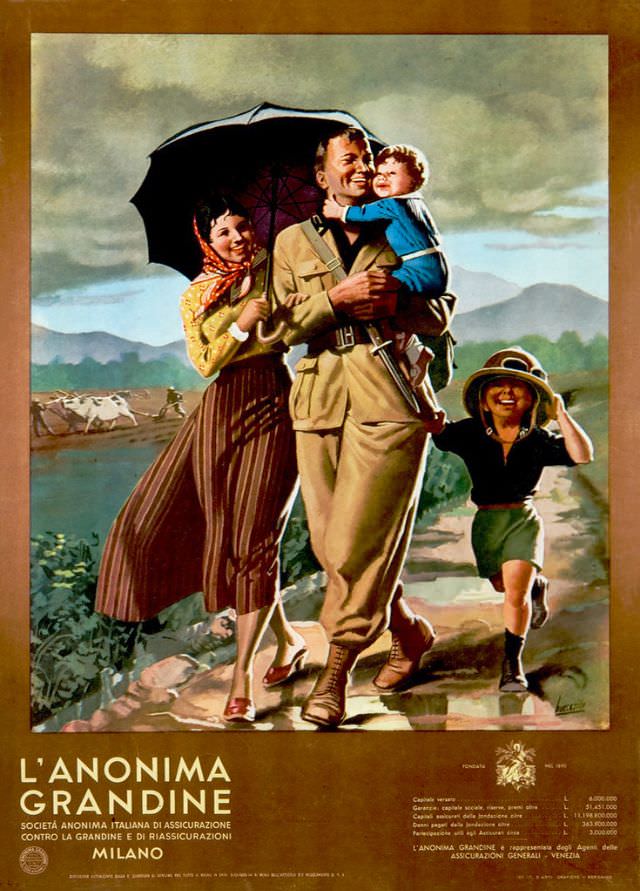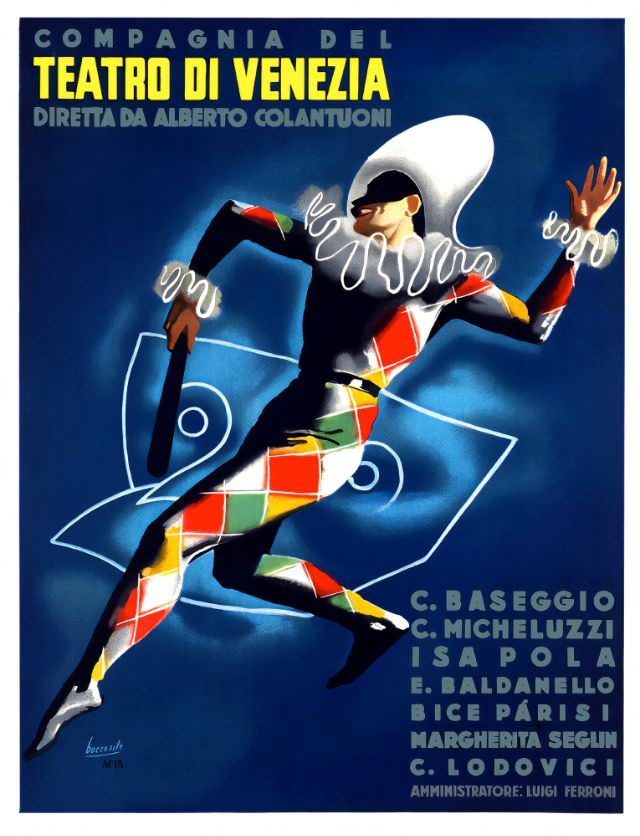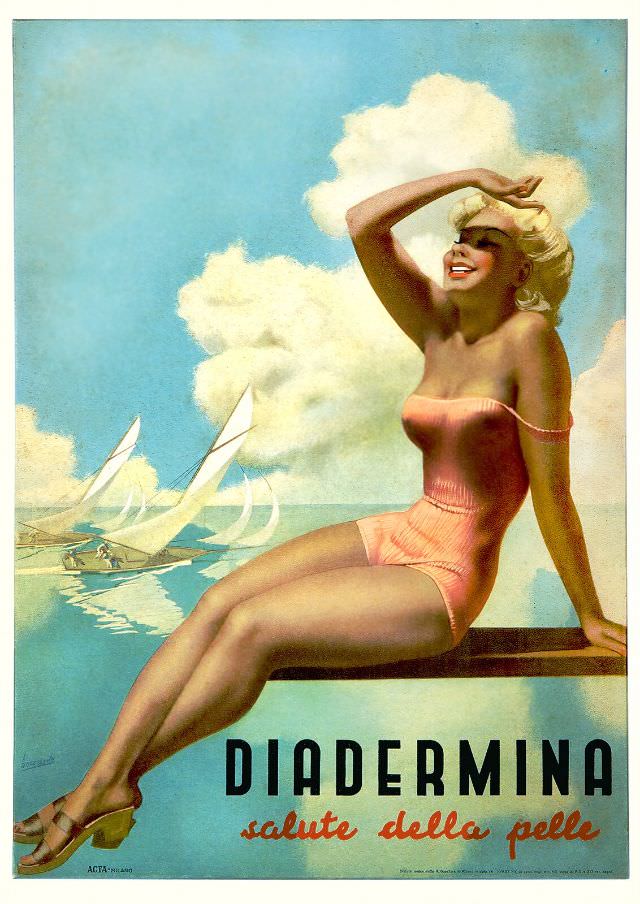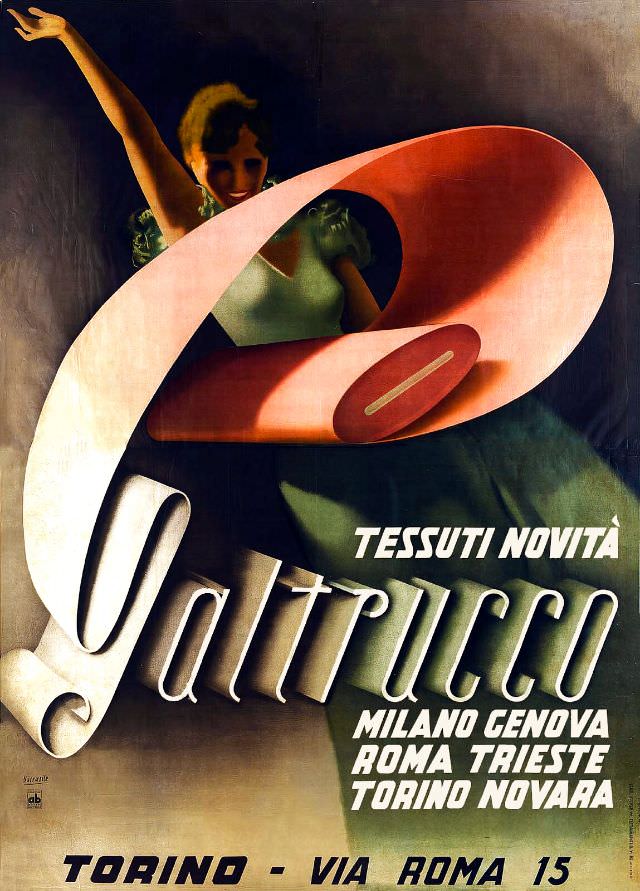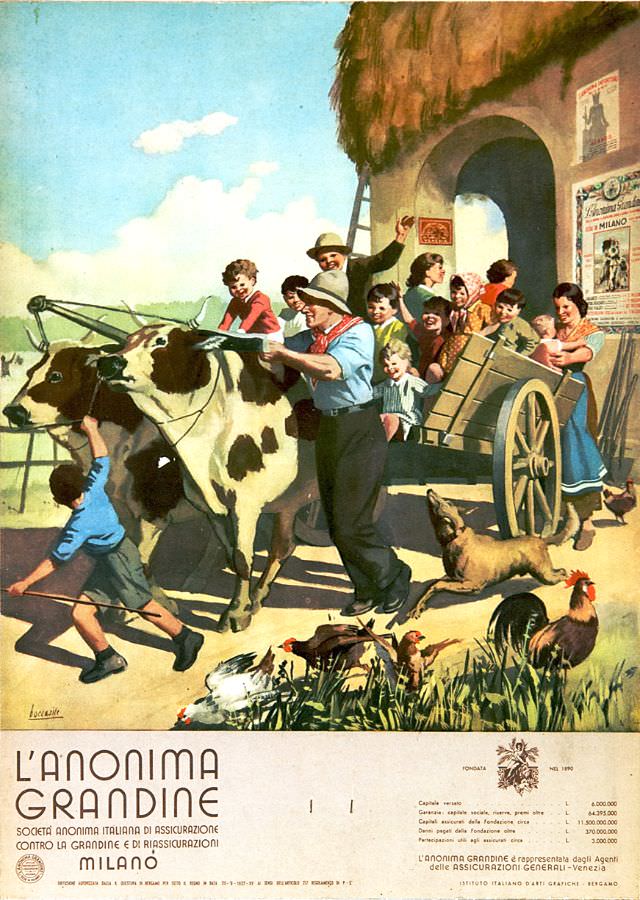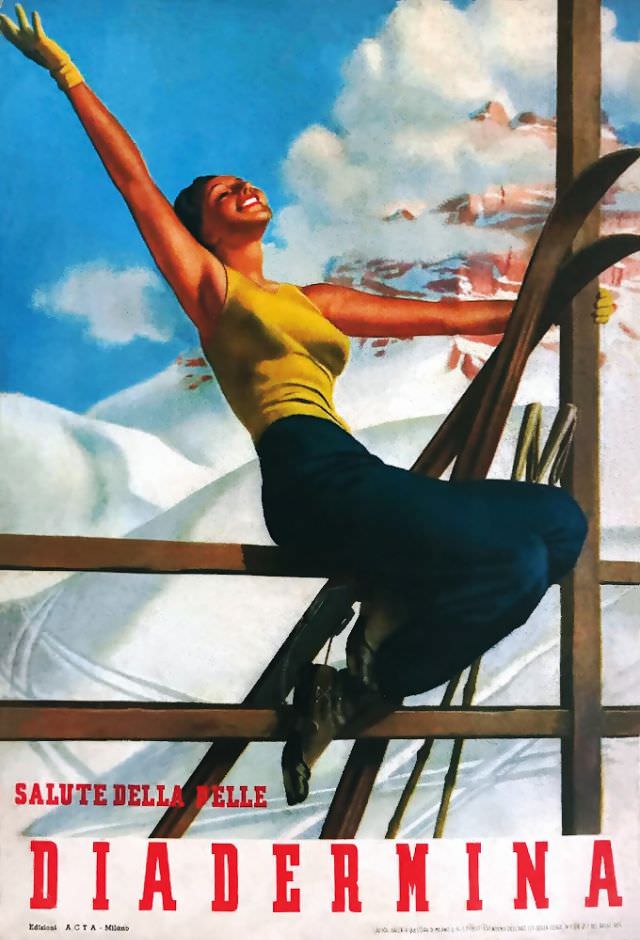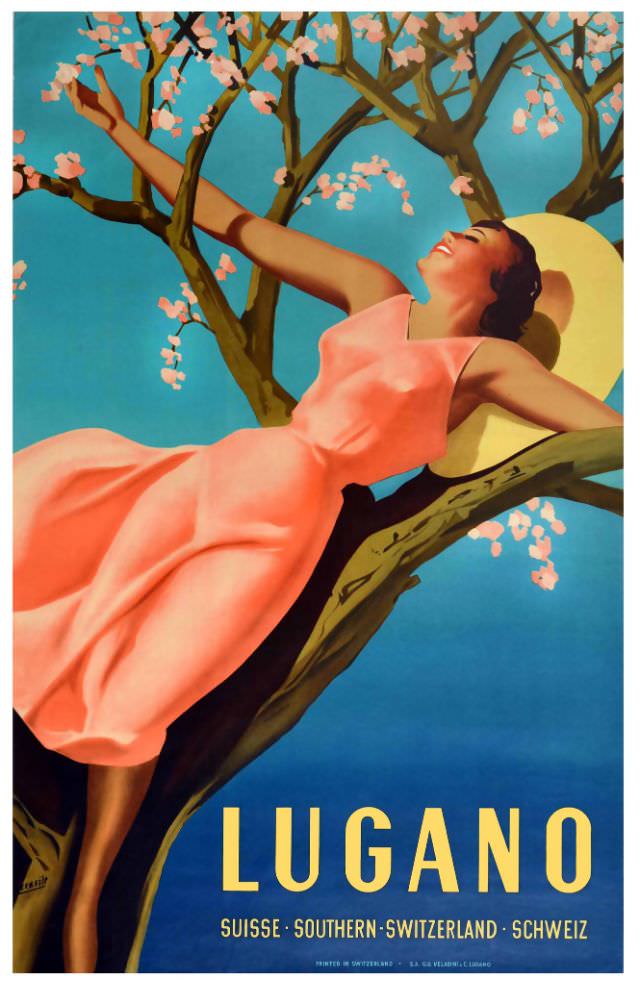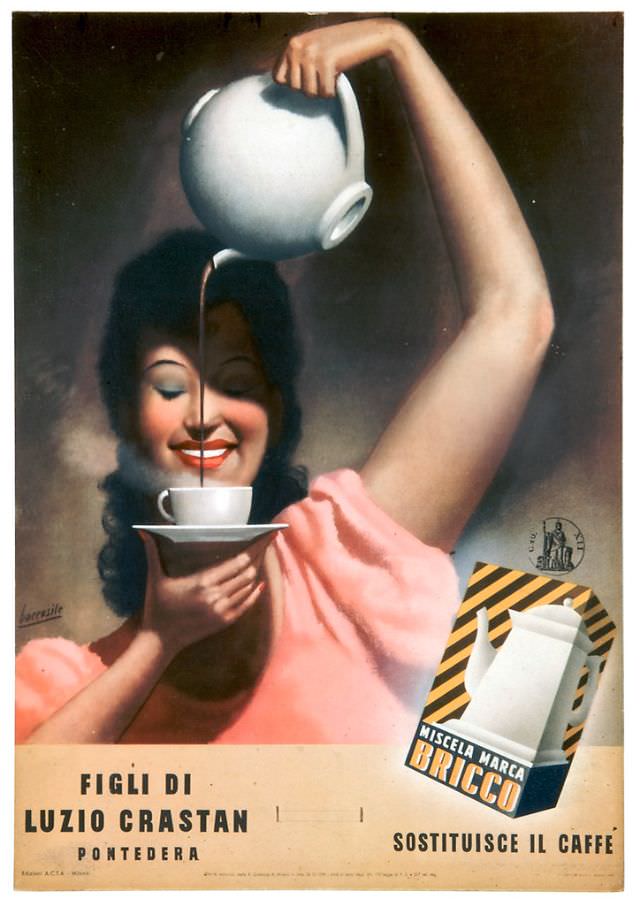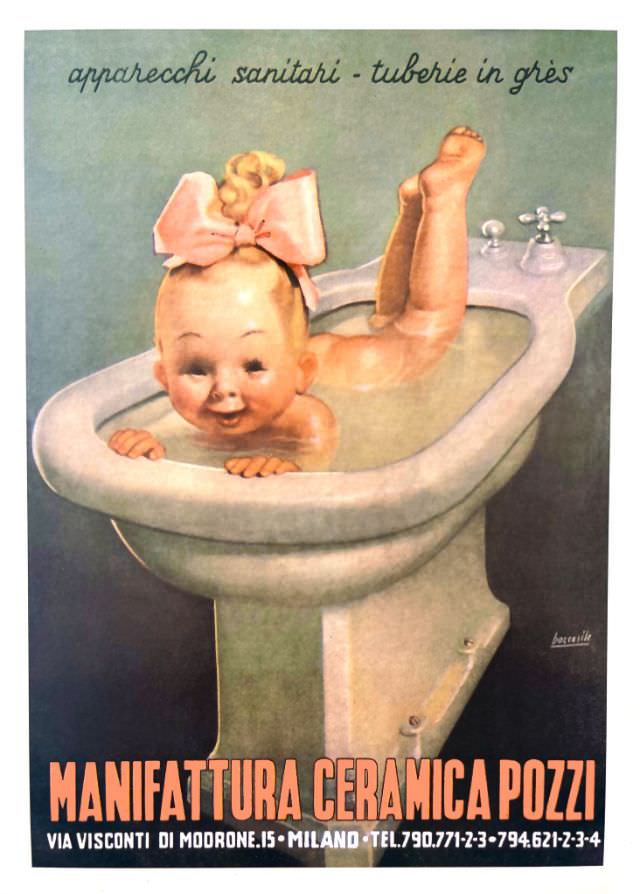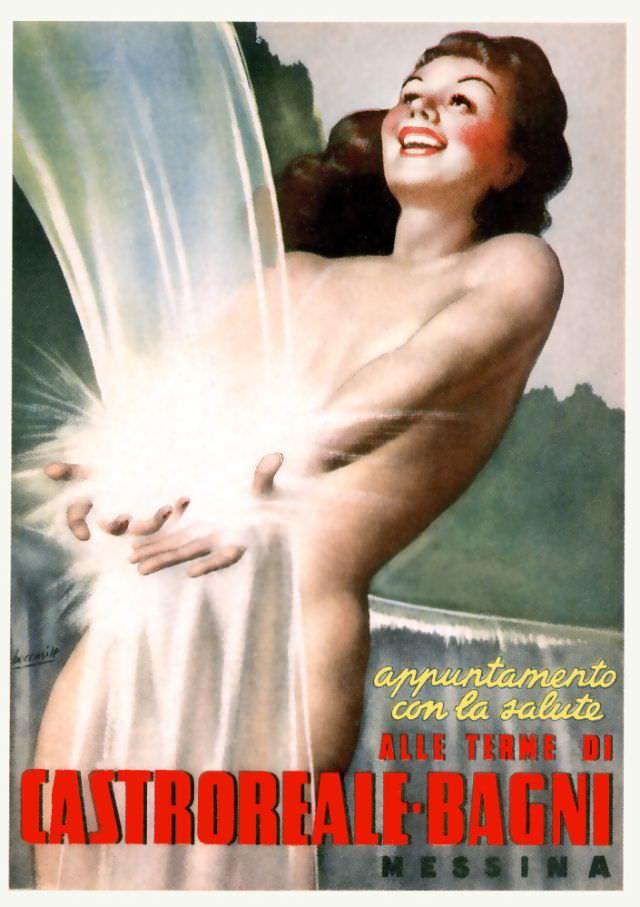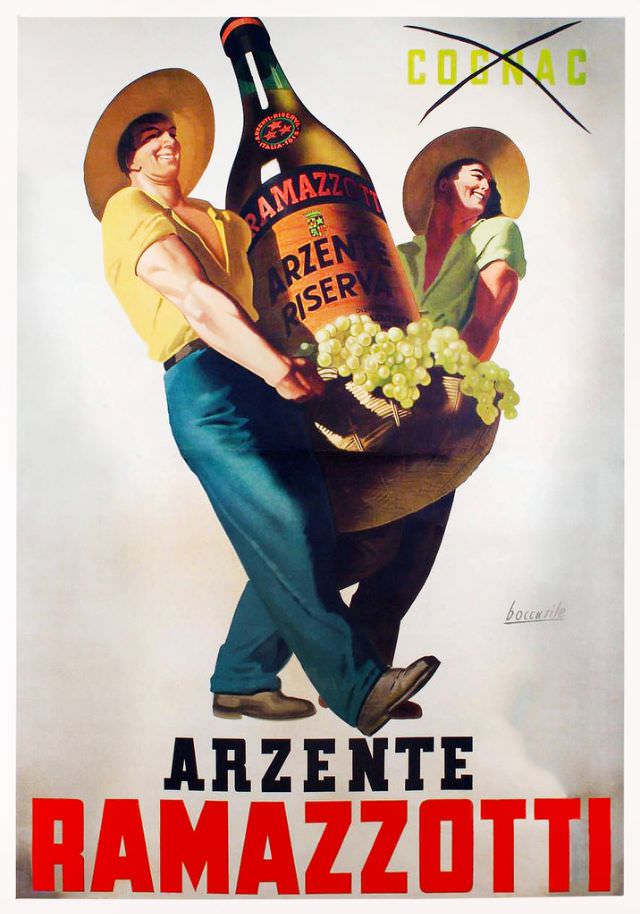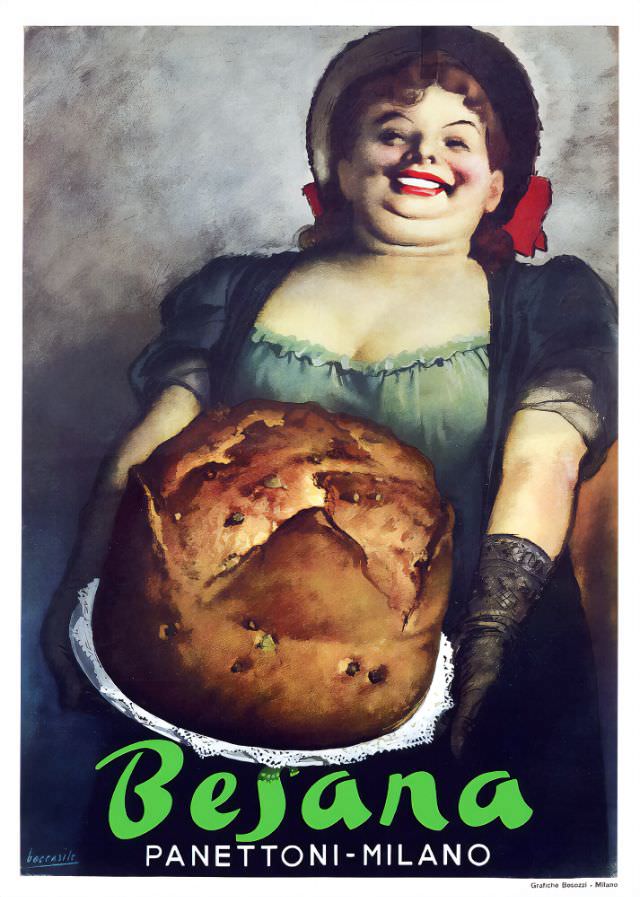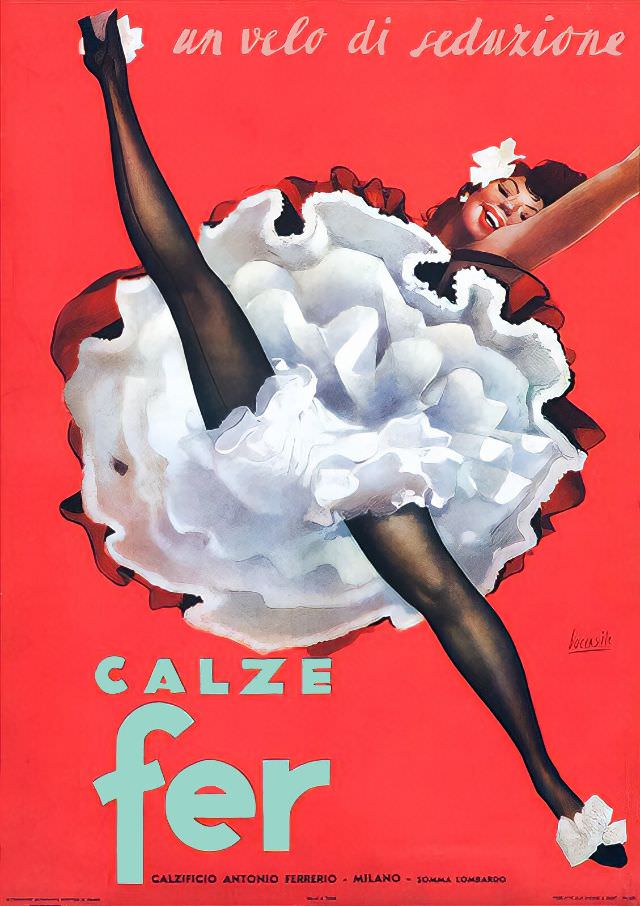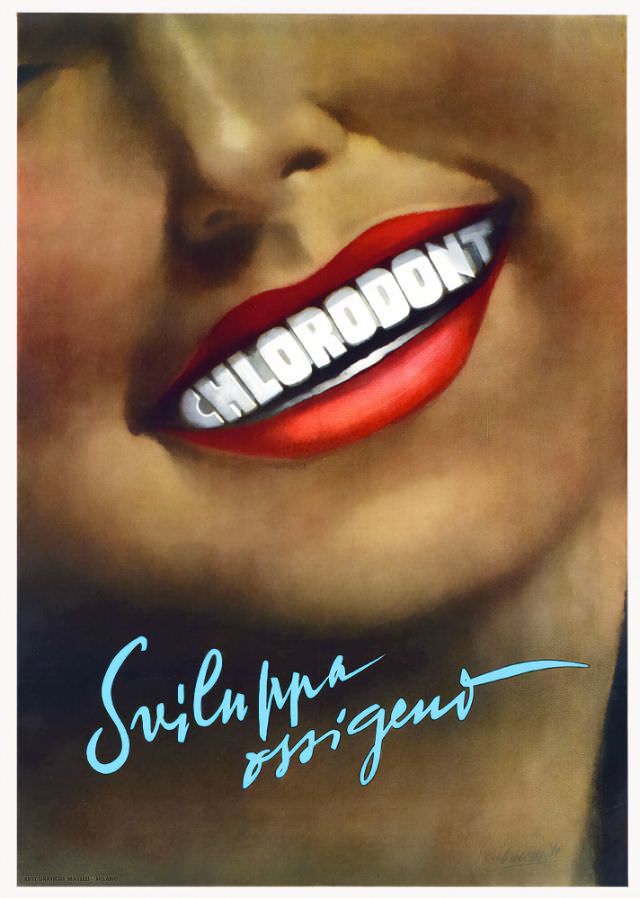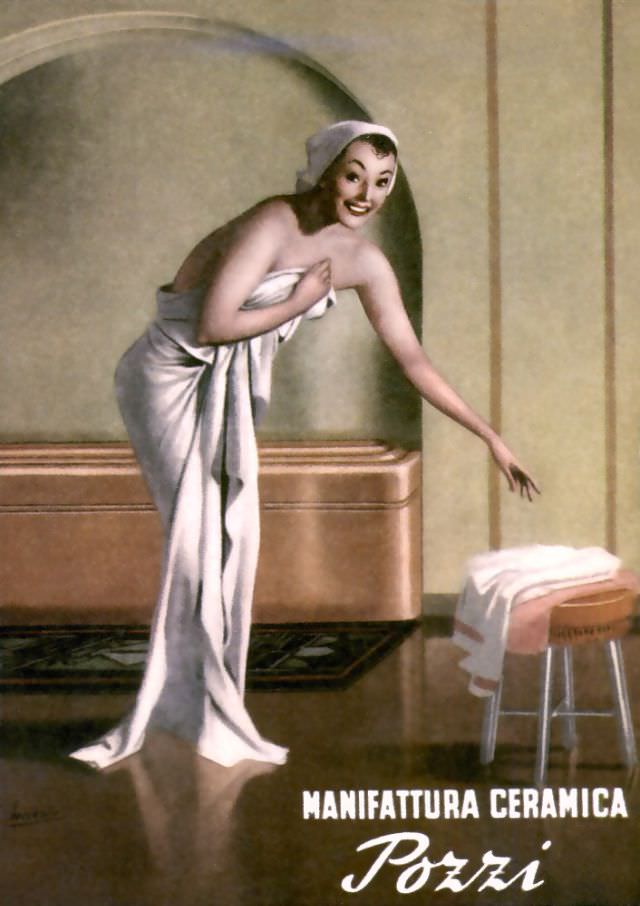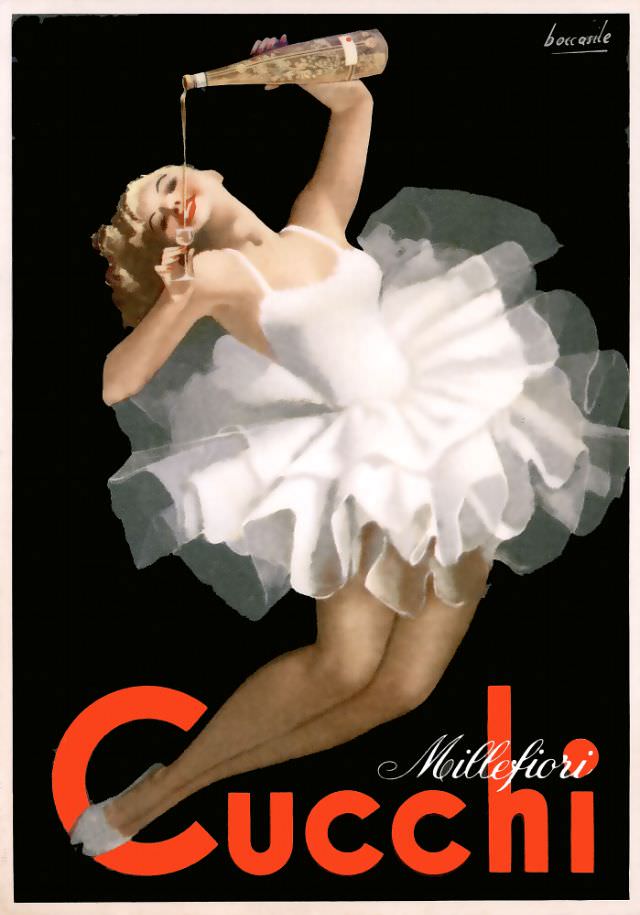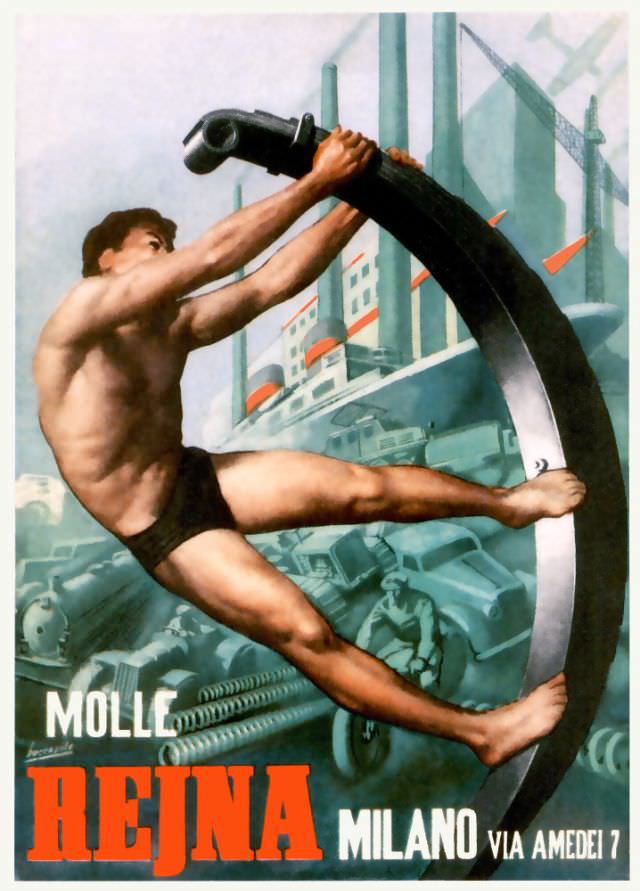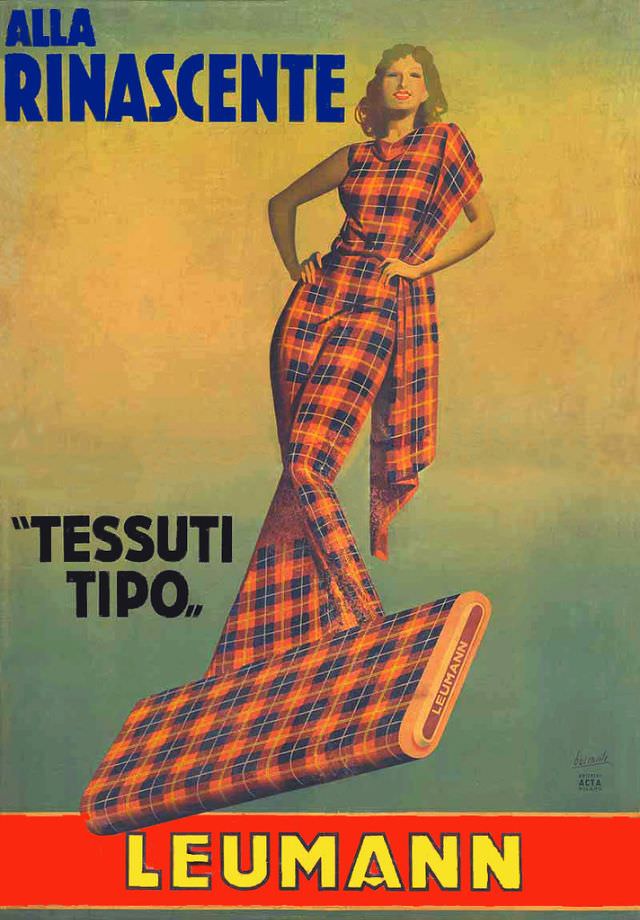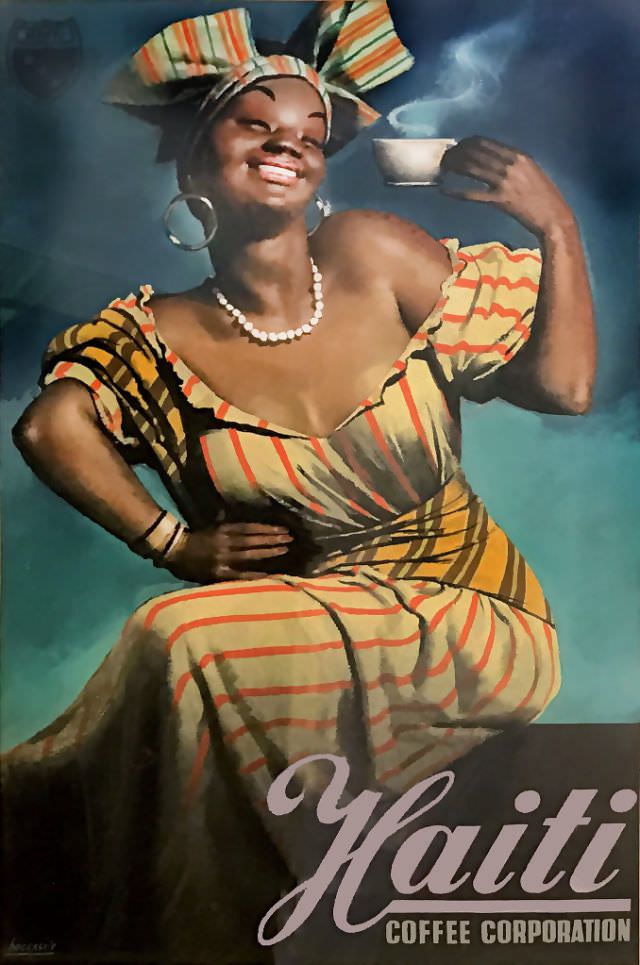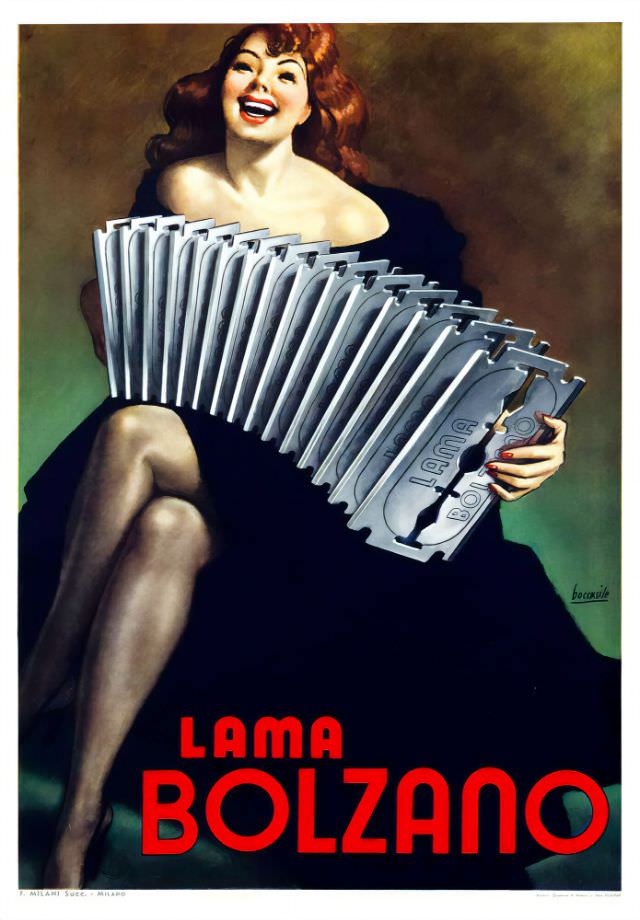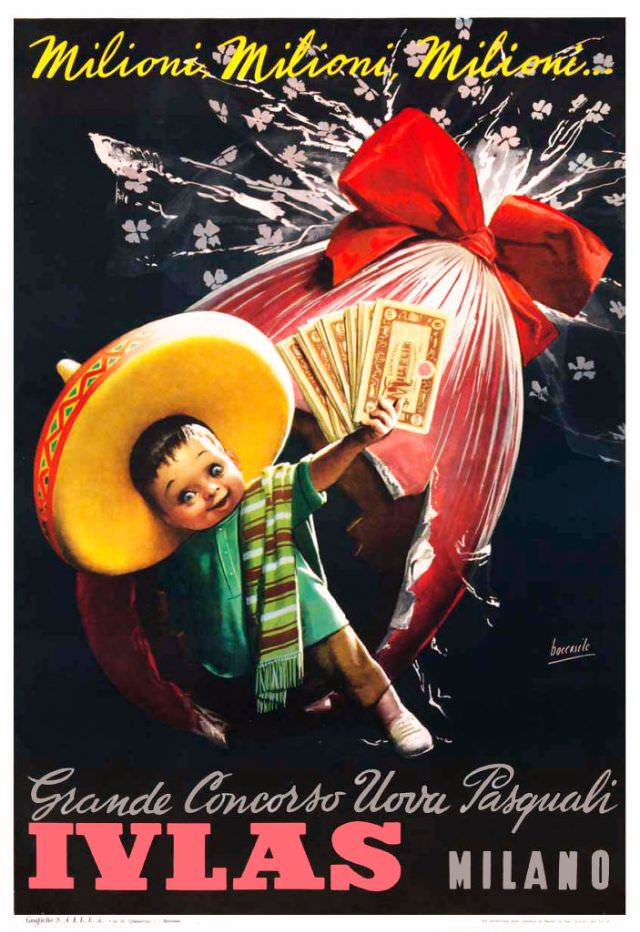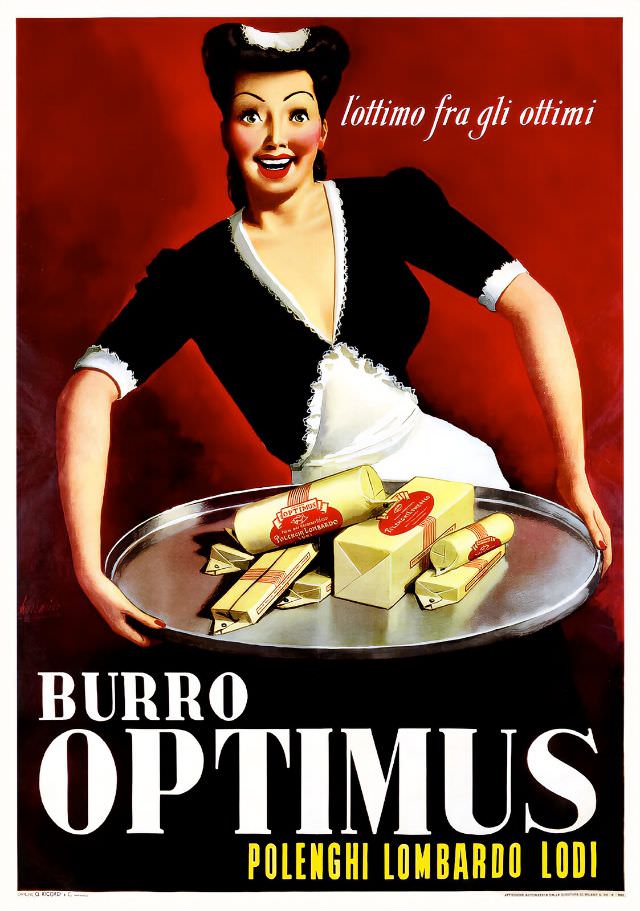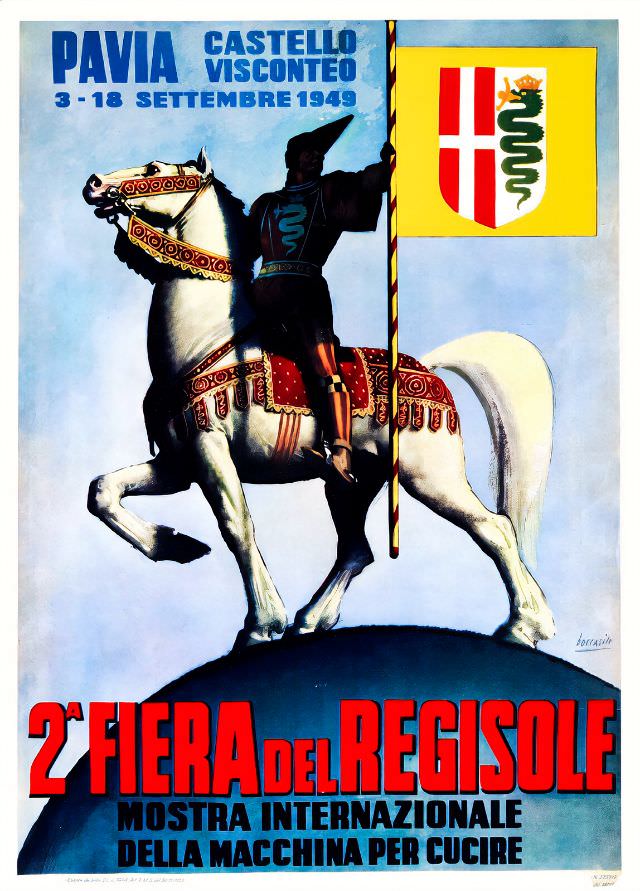When one looks back to the bygone era of the 1930s and ’40s, the world was immersed in the stark contrast of glamor, propaganda, and the shadows of war. In these turbulent times, art found a voice of its own, and one of the most prominent visual communicators of this age was Gino Boccasile.
An Artistic Phenomenon: Gino Boccasile
Born in Bari, Italy, Gino Boccasile had an early encounter with adversity, losing an eye in childhood. But, as fate would have it, his artistic vision transcended the capabilities of many with two. Boccasile was not just an artist; he was a prodigy. By 14, his talent was undeniable, and soon, his designs would shape the aesthetic benchmarks of an entire era.
1930s – The Rise of the Commercial Poster:
The 1930s saw the ascendancy of commercial art. Advertisements weren’t just about selling a product; they were about selling a dream. Boccasile’s posters, with their voluptuous women, stylish men, and seductive fragrances, weren’t just depictions – they were experiences. Brands like Ricordi and Carosello leveraged his ability to turn mundane products into objects of desire. His artwork was more than just visually appealing; it tapped into the very psyche of the consumer.
1940s – Propaganda and the Shadows of War:
The 1940s brought a shift. The world was at war, and art became a tool – a medium of communication and propaganda. Boccasile, ever the adaptive genius, transitioned from commercial art to creating compelling war-time posters. His designs, replete with vivid imagery and nationalistic fervor, became instruments of motivation and morale during Italy’s Fascist regime.
However, Boccasile’s work during this era was not without its controversies. Some posters, often deeply rooted in propaganda machinery, reflected the prejudices and biases of the time. These artworks remain a testament to the power of visual communication, even if they might clash with contemporary sensibilities.


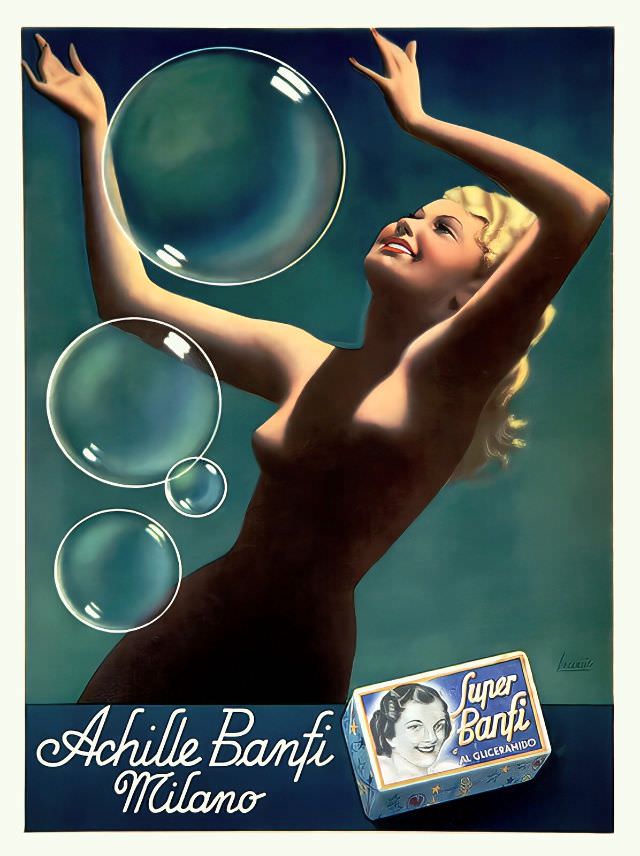
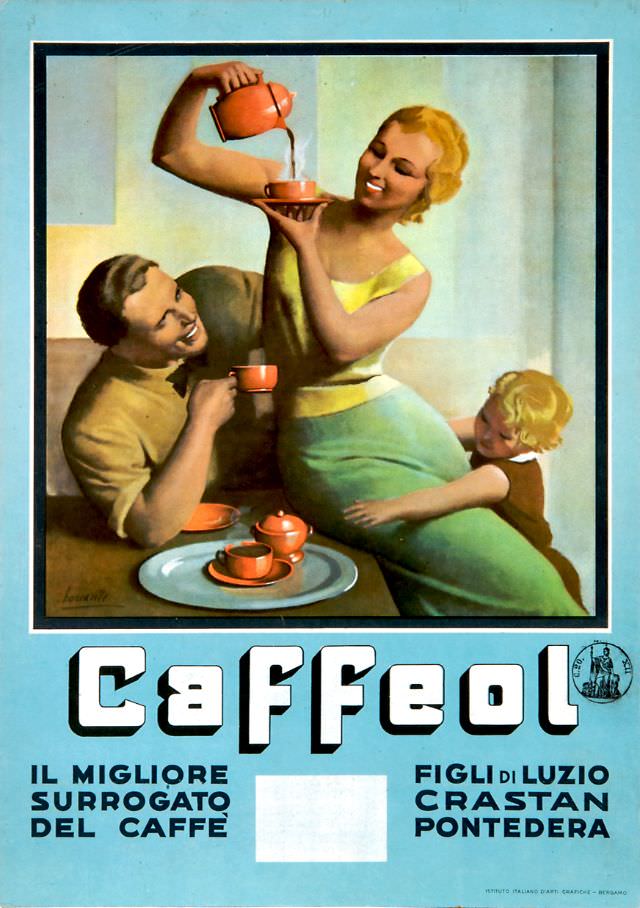
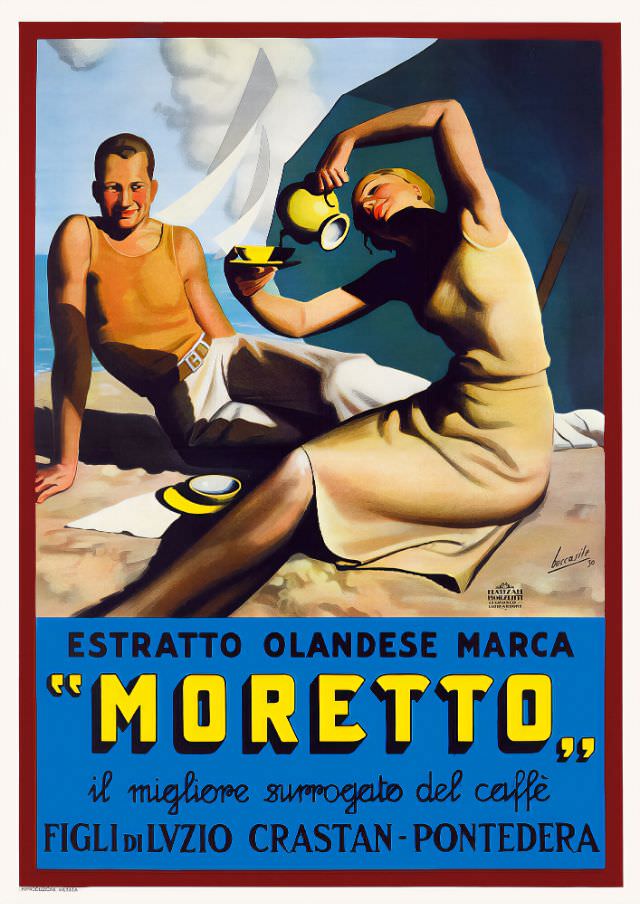
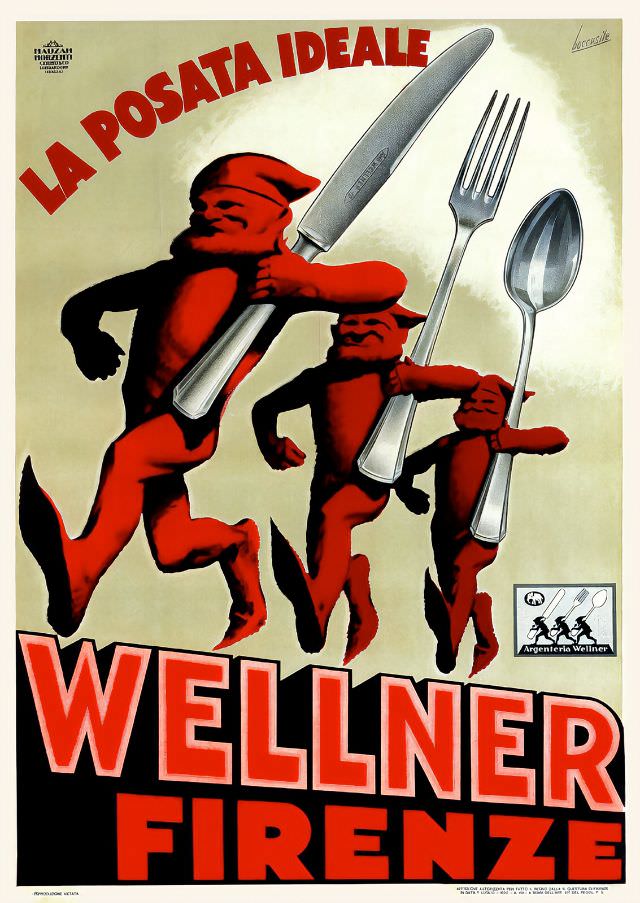
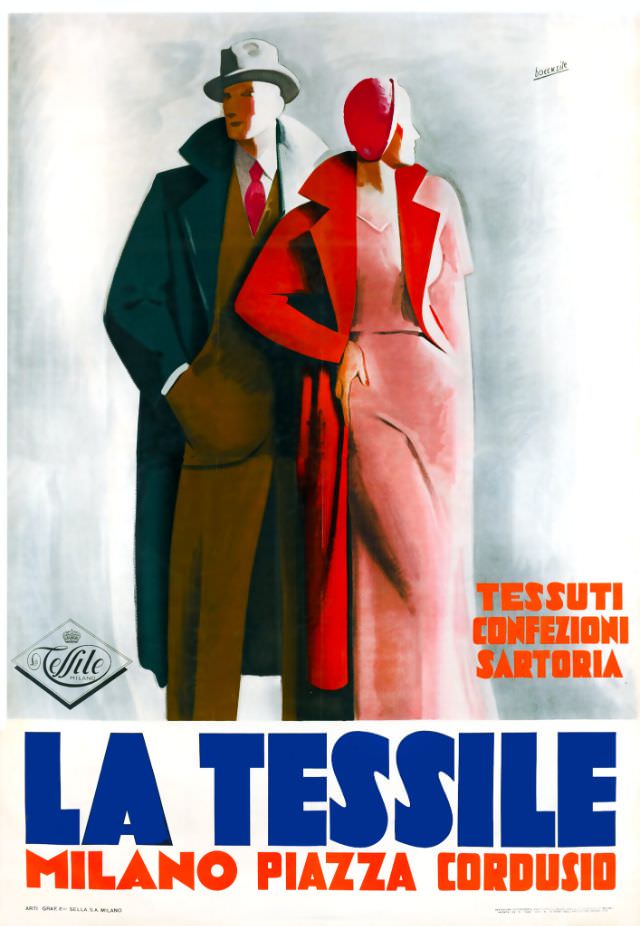
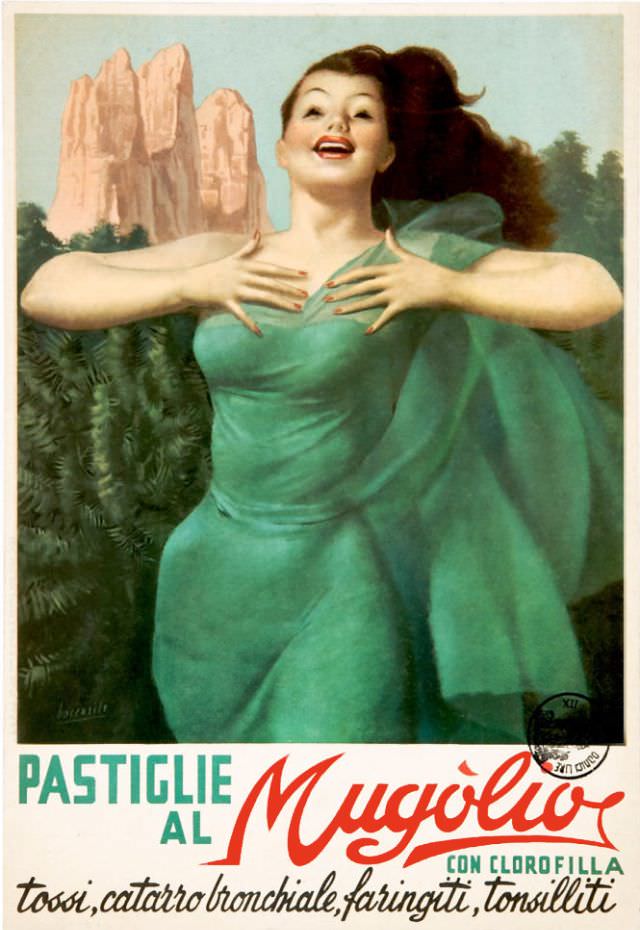
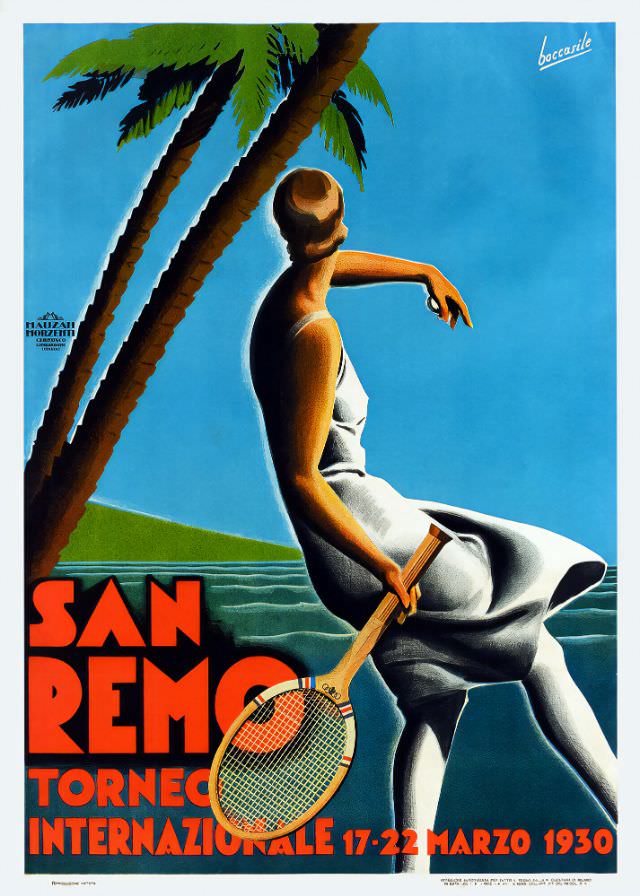
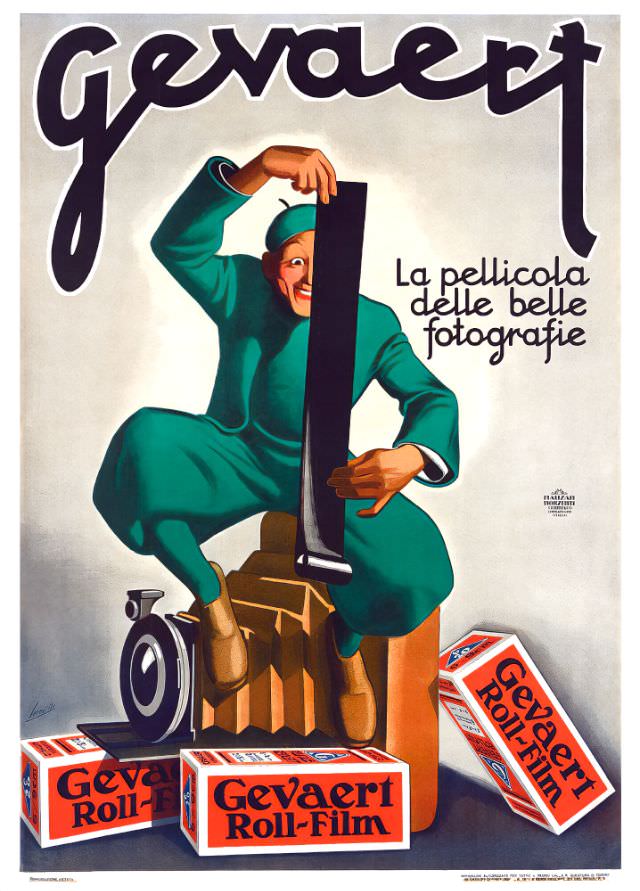
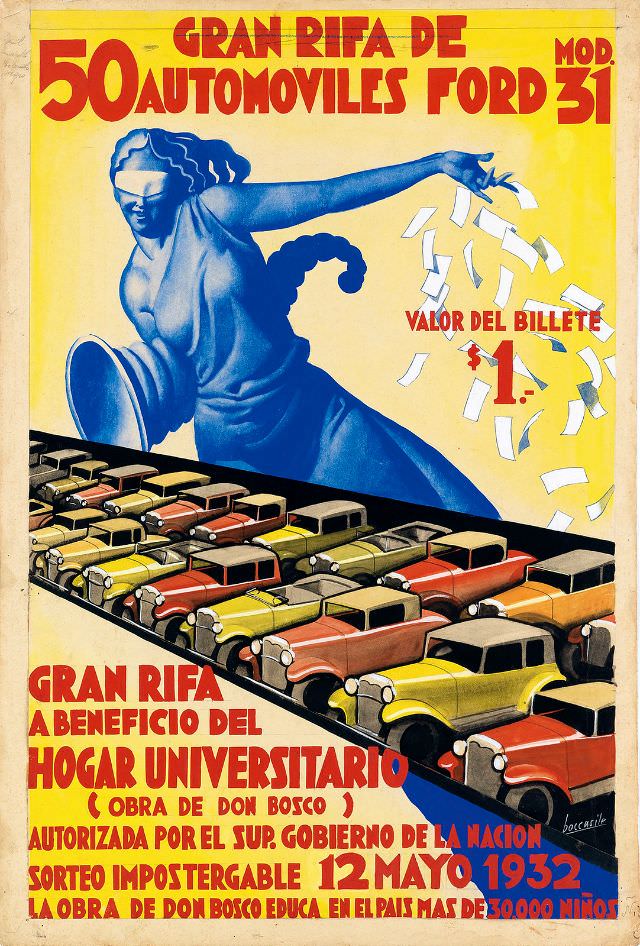
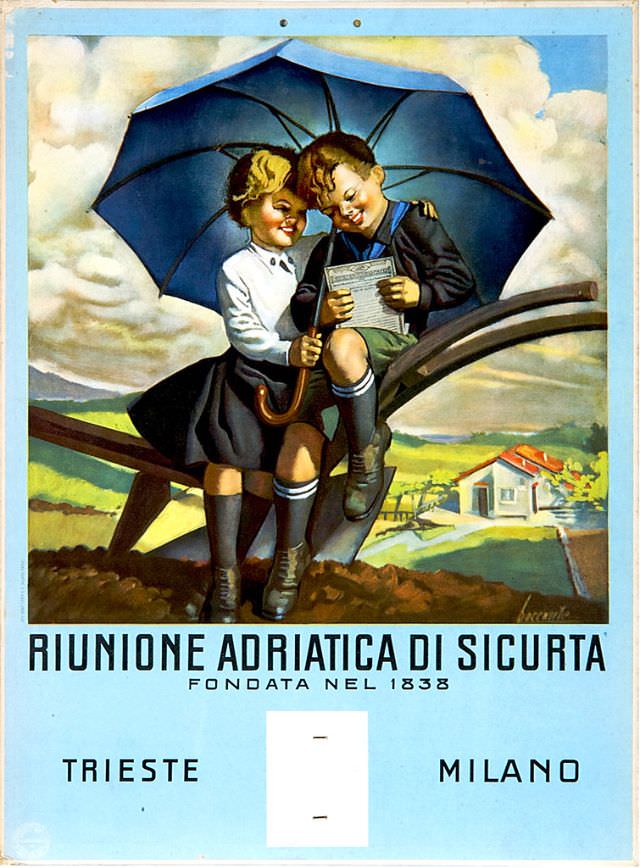
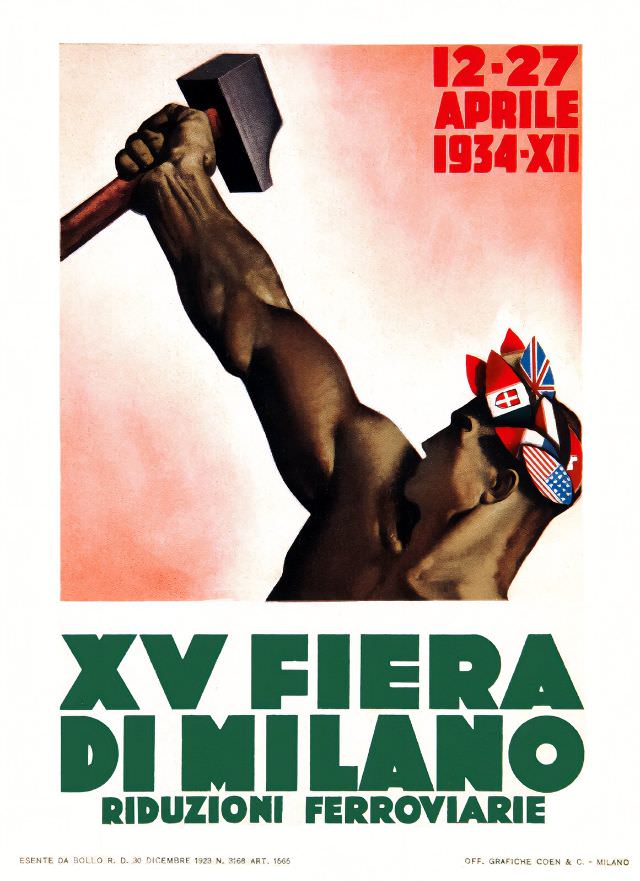
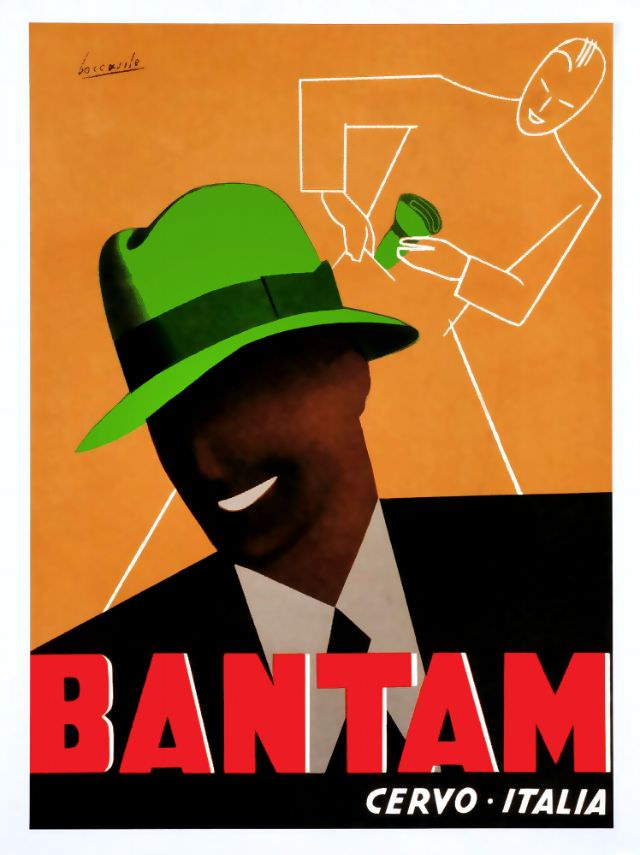
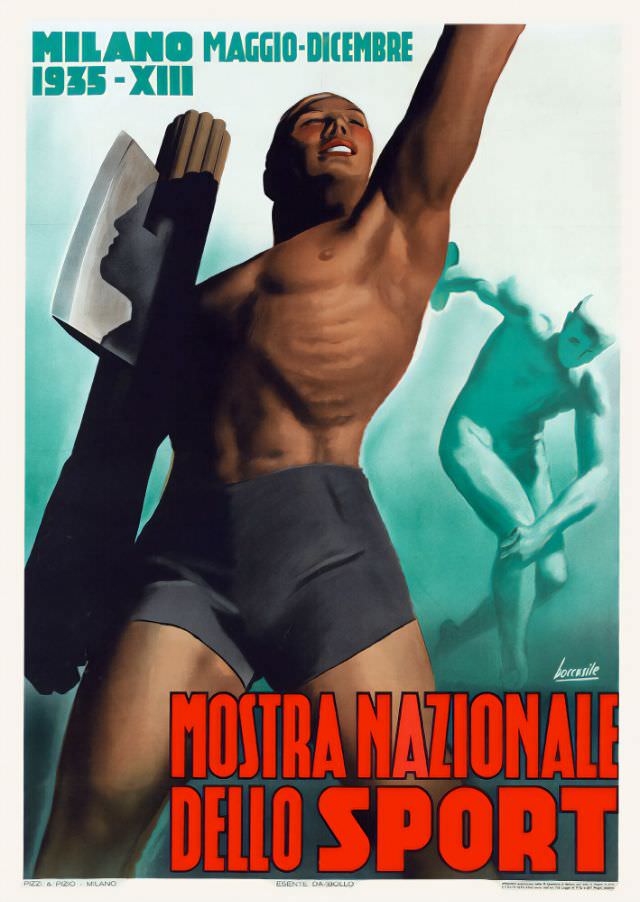
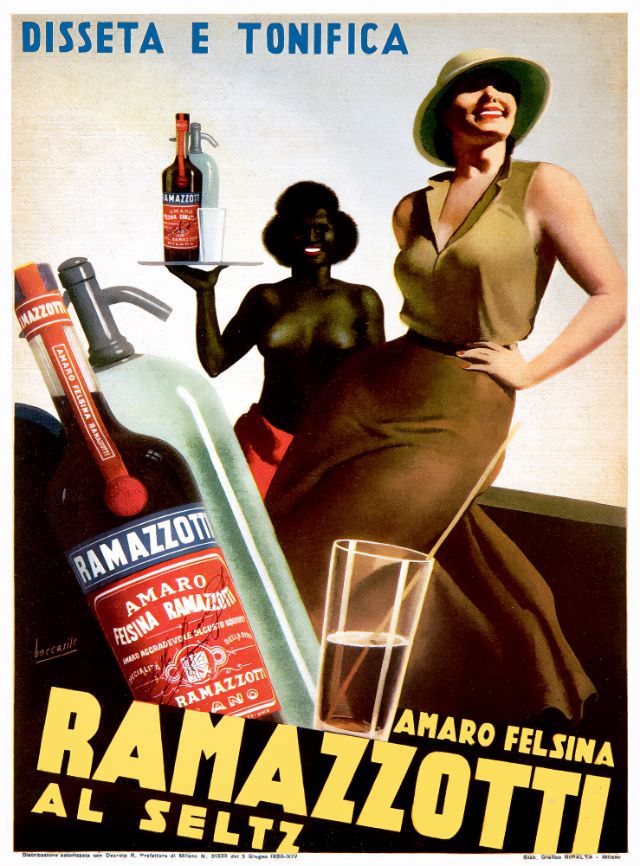
![Federazione Italiana Nuoto [Diver], 1936](https://www.bygonely.com/wp-content/uploads/2023/08/Gino_Boccasile_posters_16.jpg)
![Federazione Italiana Nuoto [Start], 1936](https://www.bygonely.com/wp-content/uploads/2023/08/Gino_Boccasile_posters_17.jpg)
![Federazione Italiana Nuoto [Water Polo], 1936](https://www.bygonely.com/wp-content/uploads/2023/08/Gino_Boccasile_posters_18.jpg)
